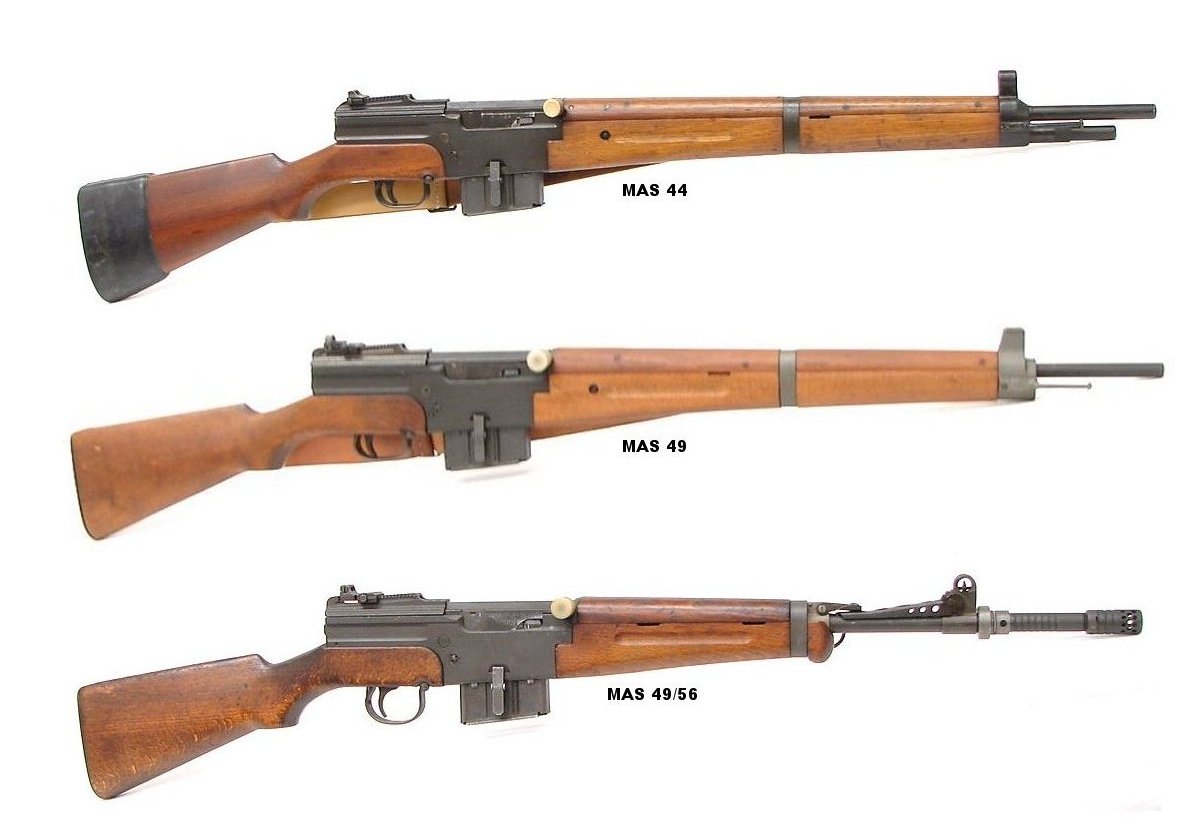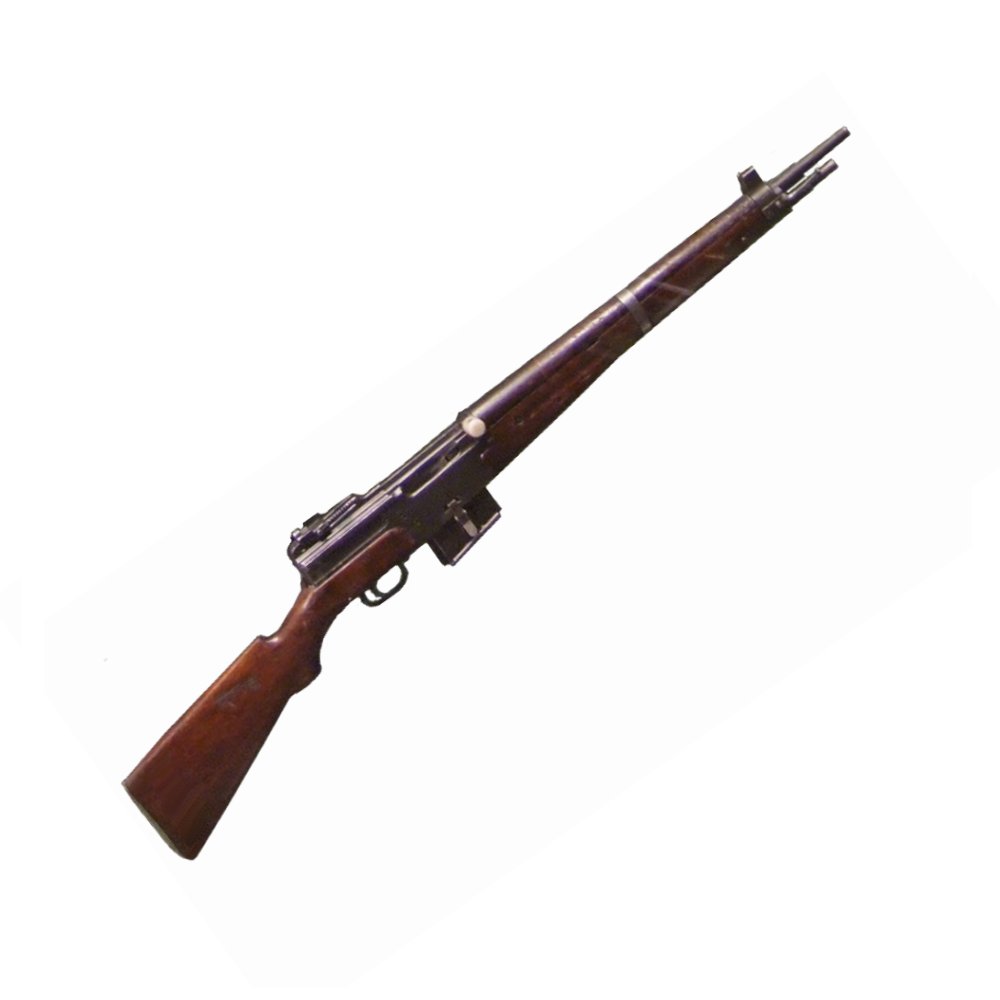Ever wondered about the unsung heroes of military firearms, those rifles that faithfully served on the front lines but often get overshadowed by their more famous counterparts? The MAS 49/56 rifle, a French semi-automatic weapon, certainly fits that description, a workhorse that combined reliability with innovative features for its time.
The story begins after a series of trials with the MAS 44A rifle. From those tests, a new design emerged, refined and ready for the demands of modern warfare. This new pattern was officially adopted as the MAS 49, with production commencing in 1951. A significant number, approximately 80,000, of these rifles were eventually manufactured. These rifles weren't just about firepower; they also incorporated practical features. A scope mounting dovetail was integrated into the left side of the receiver, allowing for enhanced accuracy when needed. Furthermore, a grenade-launching muzzle device and sight were included, adding another layer of versatility to the weapon.
| Attribute | Details |
|---|---|
| Name | MAS 49/56 (Fusil semi-automatique MAS modle 1949/56) |
| Type | Semi-automatic rifle |
| Origin | France |
| Designer | Manufacture d'Armes de Saint-tienne (MAS) |
| Years of Production | 1951 (MAS 49), 1957 (MAS 49/56) |
| Cartridge | 7.554mm French |
| Action | Direct gas impingement, tilting bolt |
| Magazine Capacity | 10-round detachable box magazine |
| Weight | Approximately 4.1 kg (9.0 lbs) empty |
| Length | 1010 mm (39.8 in) |
| Barrel Length | 525 mm (20.7 in) |
| Effective Firing Range | 800m |
| Notable Features | Integrated scope mount, grenade launching capability (MAS 49/56), shortened and lightened version of MAS 49 (MAS 49/56) |
| Users | France, French colonies (Algeria, Indochina), Syria, Lebanon |
| Conflicts | First Indochina War, Algerian War, Suez Crisis |
| Reference | Modern Firearms - MAS 49/56 |
The gas system of the MAS 49/56 is a key element of its operation. Gas is vented from a port located on top of the barrel. From there, it's channeled directly into an open, cylindrical hollow situated in front of the receiver. This direct impingement system was relatively simple and contributed to the rifle's overall reliability in the field.
- Death2kuffar Is This Shock Film Real Disturbing Content Explored
- Vivastreet Coventry Find Personals Ads More Updated
The rifle saw extensive service in the French military, from 1956 until the adoption of the FAMAS rifle in 1979. It became a familiar sight in various conflicts involving France, including those in its colonies. While the rifle's service was primarily with the French military, it also found its way into the hands of other nations and factions.
It's important to note that information concerning social programs, such as Medicaid in Puerto Rico, should adhere to principles of non-discrimination. According to guidelines, these programs should not discriminate based on age, race, color, sex, social or national origin, social condition, political or religious beliefs, physical or mental disability, or veteran status. This underscores the importance of equal access to healthcare services regardless of personal characteristics.
Beyond official military use, the MAS 49/56 has also gained a following among collectors and shooting enthusiasts. Surplus rifles, often in varying conditions, have become available on the market. Some of these rifles are even classified as Curio & Relic (C&R) eligible in certain jurisdictions, making them more accessible to collectors. These surplus rifles offer a tangible piece of military history, allowing enthusiasts to own and appreciate a firearm that played a role in shaping global events.
- 911 Pickup Lines Dark Humor Or Disaster Explore Now
- Michelle Makori News Net Worth Career Secrets Revealed
There are many ways to improve the firearm. Some owners may seek modifications, such as the addition of an APX 806 scope or other enhancements to improve performance or handling. However, it's crucial to understand the legal implications of any modifications, ensuring compliance with local regulations and restrictions. Alterations could potentially change the classification of the firearm, so it's essential to proceed with caution and consult with relevant authorities if needed.
The MAS 49/56 was chambered in 7.5x54mm French, a cartridge designed to provide a balance of power and controllability in a semi-automatic rifle platform. It utilized a 10-round detachable box magazine, allowing for relatively quick reloading in combat situations. While the magazine capacity might seem modest by modern standards, it was fairly typical for rifles of its era.
The MAS 49/56 wasn't without its quirks. Some users noted that the direct gas impingement system could lead to increased fouling in the action, requiring more frequent cleaning and maintenance. However, with proper care and attention, the rifle could maintain its reliability and accuracy over the long term. The rifle, when properly maintained, was known for its robust construction and ability to withstand harsh conditions, making it a dependable weapon for soldiers in the field.
One notable modification to the original MAS 49 design was the development of the MAS 49/56. This improved variant was introduced in 1957 and addressed some of the concerns raised with the earlier model. Specifically, the 49/56 was made shorter and lighter, with its design focused to enhance mobility, particularly for airborne troops. These modifications made the rifle easier to carry and maneuver in close-quarters combat, while maintaining its overall effectiveness as a fighting weapon.
The MAS 49/56 remains a significant artifact in the history of military firearms. Its blend of innovative features, robust construction, and widespread use solidified its place in the annals of weaponry. Today, it's appreciated by collectors and enthusiasts alike, serving as a reminder of a pivotal era in military technology.
For those interested in owning a MAS 49/56, several factors come into play. Availability can vary depending on location and import restrictions. Prices can range significantly based on the rifle's condition, originality, and any included accessories. Potential buyers should carefully inspect the rifle, checking for signs of wear, damage, or modifications. It's also advisable to research the rifle's history and provenance to ensure its authenticity and value. Online forums, gun shows, and reputable firearms dealers can be valuable resources for finding and evaluating MAS 49/56 rifles.
Beyond the rifle itself, there's a wealth of information available for those seeking to delve deeper into its history and operation. Numerous books, articles, and online resources provide detailed insights into the design, development, and deployment of the MAS 49/56. These resources can be invaluable for collectors, researchers, and anyone interested in learning more about this iconic French firearm. In addition, many videos showcase the rifle's features and firing characteristics.
The MAS 49/56, like any firearm, requires responsible ownership and safe handling. It's essential to adhere to all applicable laws and regulations regarding the purchase, possession, and use of firearms. Proper storage and maintenance are also crucial for ensuring the rifle's safe and reliable operation. Owners should familiarize themselves with the rifle's manual and seek professional training in safe gun handling practices.
In conclusion, the MAS 49/56 stands as a compelling example of mid-20th century military rifle design. Its development, deployment, and subsequent use have left an indelible mark on the history of firearms. Whether as a collector's item, a piece of military history, or a recreational shooting firearm, the MAS 49/56 continues to captivate and intrigue those with an interest in the world of weaponry.
- Andrew Benintendi Wife Career More Discover His Life
- Lily Donaldson The Untold Story Of Her Life Relationships


